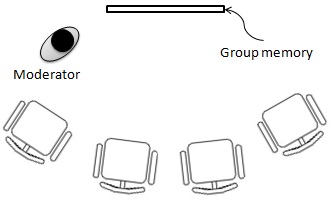This article explores the usefulness of an organized brainstorming session. It applies the principles of time management and presents ideas on the conduct of time-saving meetings. Here are brainstorming tips that are proven to work.
How do you generate ideas for research purposes? Is it challenging to come up with one?
The answer is No. It is easy to come up with ideas for research as long as you employ a systematic approach.
Beginning researchers experience difficulty in generating research ideas because they
- are unfamiliar with the topic or has few exposure about it, and
- have a preconceived notion that research is a difficult task to undertake.
Reading the following brainstorming tips in this article makes generation of research topics easier.
5 Brainstorming Tips to Generate Ideas
1. Engage Your Colleagues, Classmates, and Friends
You can quickly generate research ideas by brainstorming on your chosen topic. Find colleagues, classmates, or friends who share the same passion, interest, field of specialization, or discipline.
However, your group can easily get carried away and might talk about irrelevant things unrelated to your initial intention of discussing ideas for research. Say, you spoke of someone else instead of focusing on your initial plan for research. And you realized that the group is already gossiping.
Hence, a method, or strategy, that will bring your research ideas into focus comes into the picture.
2. Prepare the Materials Needed for the Brainstorming Session
You will need the following materials to facilitate the brainstorming session.
1. a new marker (to avoid interrupting the brainstorming session due to depleted ink) or chalk
2. a small (2′ x 3′) whiteboard, blackboard, or Manila paper
3. a comfortable room free from distractions
4. ergonomic chairs for the participants
3. The Group Memory
To avoid the tendency to talk about something else instead of your intention to generate ideas for research, make sure that you have a small whiteboard, blackboard, a Manila paper, or anything you can write to where everybody can focus undivided attention.
Whatever content jotted down on this medium serves as the “group memory.” The whiteboard or the Manila paper in front of the group will hold everybody’s attention as you discuss the idea for research that you are initially interested in but which you find too broad to research.
Therefore, you will serve as the moderator who will present the initial idea for research that the group will brainstorm on. A group composed of 3 to 4 four people would be best where everyone is seated in an arc in front of you to avoid unnecessary conversations.
Of course, you will need to hang the whiteboard or paste a Manila paper on a wall where everyone can see it. You may refer to the illustration below on how to arrange the seats.

4. Choose the best time for brainstorming sessions
It is best to do brainstorming sessions in the early part of the day as the mind is still fresh, active, and uncluttered by the day’s cares.
You can conduct brainstorming in one hour, so 8 to 9 o’clock or 9 to 10 o’clock would be ideal. Never do this at 1 or 2 o’clock as sleepiness can easily slip in, but 4 o’clock would be okay because the mind gets a second wind.
5. Undertake mind mapping
Mind mapping is an excellent way of synthesizing the ideas generated in the brainstorming sessions. Start with a central idea and attach keywords related to the main topic, connecting each word that crops up during the discussion.
For example, you may begin with a keyword such as “climate change.” Write this at the center of the whiteboard, blackboard, or Manila paper. From there, come up with a mind map (see mind mapping).
Erasing or changing entries will not be problematic if you use a whiteboard or blackboard. Take a picture of the output once finished or when the board is filled up. Re-write the last topic discussed and make it the next central topic. Add more as you see fit or necessary.
When using Manila paper, draw a line on each of the listings you want to change. Listen to the following video on the detailed aspects of mind mapping.
From the set of ideas in your mind map, select a clump where you can relate two or three variables (You have to read first what a variable is if you are not familiar with this concept). This set of variables now will help you find the applicable theoretical framework to back up your study. The theoretical framework will be your basis for constructing your conceptual framework.
Using modern mind mapping tools such as XMind, it is now easy to connect the keywords and arrange them neatly without physically erasing a phrase or a keyword. I find this extremely helpful in my mind mapping activity, alone or with a group of people.
At this point, you will be able to generate a lot of ideas for research and focus your attention on those key variables that matter to you or you are interested in. I have seen excellent results using these brainstorming tips.
© 2012 November 10 P. A. Regoniel | Updated 16 December 2021


